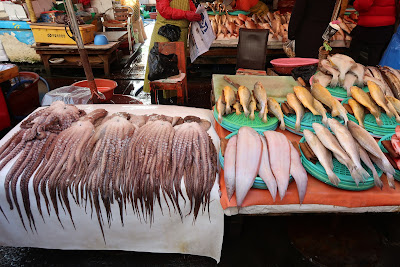I had the chance to work in Munich for a month during summer, and I grab the opportunity to travel around the region every weekend to "maximize" my stay. My first weekend was spent in the charming city of Budapest, the capital of Hungary.
From Munich, I took an overnight train on a Friday night, and reached Budapest on Saturday morning.
From Munich, I took an overnight train on a Friday night, and reached Budapest on Saturday morning.
Budapest Train Station
At the train station, I changed some Hungarian Forint (Hungarian currency) using my Euros, and bought a 24 hours travel card. This travel card is valid for all public transportation in Budapest, and allows me to travel around without the hassle of finding out how much the fare is since I do not speak their language, or dig for coins to pay for my fare. You can easily break the cost even if you intend to go around from place to place using public transport.
From the train station (Keleti Pályaudvar), I took the metro, and 6 stops later, I dropped off at Széll Kálmán tér M, where I took bus 16 (or 16A) to Szentháromság tér, which is 4 stops away, to Fisherman's Bastion. If you only have a few hours in Budapest, this is the place you cannot miss.
Metro in Budapest
Built in early 1900s, this bastion gives all visitors an insight to neo-Gothic and neo-Romanesque style of architecture, and provides the best view of the Pest side along the Danube River.
From the Fisherman's Bastion, it's a short walk to Buda Castle, which is now converted into a National Gallery and History Museum. I did not take the tour to enter the castle. Instead, I walked around its premises before taking the funicular down to cross the Chain Bridge. Do note that the price of taking the funicular is not covered in the 24 hours travel card.
Budapest Castle
The Chain Bridge is the first permanent bridge across the Danube in Hungary, and links up the Buda and Pest side of Budapest.
Across the Chain Bridge, the St Stephen Basilica is about a 10 mins walk away. Its basilica title was given in 1931 by the Pope at that time, marking this place as an important church building in Hungary ever since.
A wedding was taking place in the basilica at the time of my visit.
From the St Stephen Basilica, I back-tracked my steps to the Danube River to make my way to the Parliament House, passing by the Shoes of the Danube along the way. The Shoes of the Danube is another site with historical meaning, created to honour the people who were killed along the Danube River during World War II, where they were told to take off their shoes before they got shot at the edge of the river.
The next destination in my itinerary was the Hungarian Parliament Building. Being the tallest building in Budapest, its magnificent structure already caught my eyes when I was across the river at Buda Castle, but it was the tour inside the building that literally took my breath away. You'll need to join a tour to be able to enter the building, and I pre-booked the ticket for the English tour before hand at its official website. The tour, which started on time, began with some security checks, before the tour guide leads us through the various golden plated corridors and rooms, explaining its significance and purpose. We also had the chance to view the Holy Crown of Hungary (where no pictures can be taken), which was used as the coronation crown of the kingdom of Hungary.
Exiting the Parliament House
After the Parliament Building tour, I made my way to the nearest metro station, Kossuth Lajos Square, and took the metro to Keleti Railway Station (4 stops away), and checked in Hotel Hungaria City Center to freshen up myself, before taking a bus to my last stop of the day, Hero Square.
An UNESCO World Heritage site, Hero Square was built in 1896 to celebrate the 1000 year its ancestors found a place to settle down.
Budapest is also famous for its thermal bath (hot spring bath), and if you are interested in visiting 1, Szechenyi Bath House, 1 of the biggest hot spring bath house in Europe, is just a 10mins walk away from Hero's Square.
I ended my eventful day with a dinner near the hotel, and after a night rest, I took the train back to Munich, stopping by the beautiful Chiemsee, where I visited the unfinished Herrenchiemsee Palace and a Benedictine nunnery built in 782. I'll share with you my experiences in Chiemsee in my later post.
Related post: Day Trip to Chiemsee










































